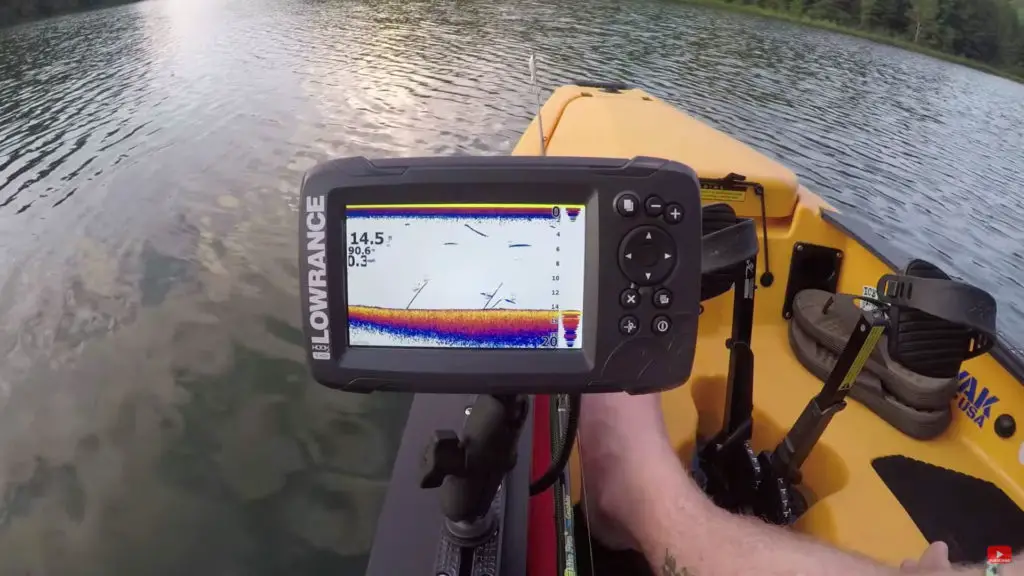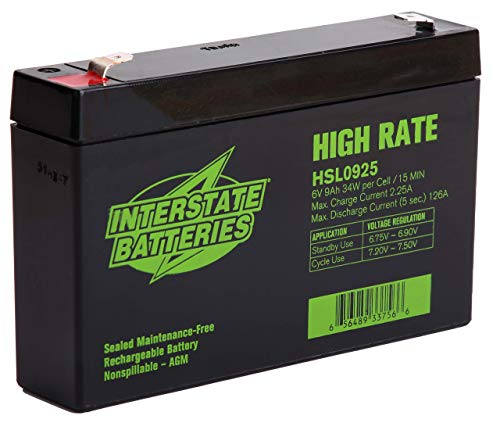If you are interested in fishing, you probably know that a fish finder is a must-have.
Fish finders make it easier to spot and capture fish. However, they need power, which often comes from batteries.
The two most used types of fish finder batteries are sealed lead acid and lithium batteries.
Under the lithium category, there are two options – lithium iron phosphate and lithium-ion.
But before we delve into the details about the different types of batteries available, it is essential to understand the lingo associated with batteries.
Table of Contents
Commonly Used Battery Terminologies
Here are the terms you are likely to hear when shopping for fish finder batteries.
- Ampere – this is the amount of current passing through a circuit at a time.
- Ampere-hour – this is a measurement of a battery’s capacity, calculated by multiplying current and the discharge time.
- Cycle life – this is the estimated number of times you can charge and discharge a battery before it loses its original potency by 80%.
- Voltage – also known as potential difference, it is the amount of electromotive force needed to move one ampere through a wired circuit.
- Watts – the amount of power stored in a battery.
Types of Batteries
As mentioned earlier, the two main types of batteries are lithium and sealed lead acid batteries.
Sealed Lead Acid Batteries
If you own a car or solar power system, you probably power it using lead acid batteries.
In the past, this technology required you to periodically add water to ensure that the sulphuric acid maintains its balance and the battery retains a good working condition.
This was risky, as the acid is highly corrosive.
In recent years, technological advancements have led to the introduction of much safer sealed lead acid (SLA) batteries.
These are maintenance-free because you don’t need to add water.
The sulphuric acid inside them is paste, unlike the past when it was liquid.
A typical lead acid battery has six individual cells, each rated at 2V. This means that it has a total voltage of 12.
During the construction of SLAs, silica is added to liquid sulphuric acid to convert it into gel, after which sealing is done.
You can use this type of battery in any position without worrying of leaks. On the downside, SLAs tend to have a high internal resistance.
Another technology seen as an improvement on traditional lead acid batteries is the use of absorbent glass mats (AGM).
These mats don’t affect internal resistance.
The most significant advantage of lead acid batteries is their affordability. They are also easy to maintain and provide reliability.
However, they tend to be bulky and disposing off them can be hazardous to the environment since they contain lead and sulphuric acid.
Lithium Batteries
In this type of batteries, one pole is made using lithium and the other using iron phosphate.
Initially, both poles were made using lithium, but constant overheating problems forced developers to start using iron phosphate.
One of the main advantages of lithium batteries over their lead-acid counterparts is energy efficiency.
While the former produces up to 92% of its capacity, the latter rarely goes beyond 80%.
Moreover, lithium batteries maintain their state of charge longer when left idle over extended periods.
Additionally, you don’t need to fully charge a lithium battery before storage, as the case with lead acid types.
- BATTERY TYPE: 12 Volt 7 Amp Hour sealed lead acid battery with T1 terminal is rechargeable, SLA battery. 3. 72x 5. 94x 2. 56
Prices pulled from the Amazon Product Advertising API on:
Product prices and availability are accurate as of the date/time indicated and are subject to change. Any price and availability information displayed on [relevant Amazon Site(s), as applicable] at the time of purchase will apply to the purchase of this product.
This applies even when you want to shelf the battery for months.
Regarding temperatures, lithium batteries offer a broad range.
The battery can operate efficiently in environments with as low as -20 degrees, and those that experience highs of up to 60 degrees. As a result, you can fish all year round.
Another reason to consider lithium batteries is their lightweight nature.
At the same capacity, a lithium battery weighs half as much (or even less) than a lead acid battery.
Despite their numerous advantages, lithium batteries have their shortfalls.
Voted ‘Best in class’ we like the Dakota Lithium batteries here on Amazon
Because none of the component cells are identical, they charge at different rates.
Over time, this might destroy some cells due to undercharging or overcharging. The best way to prevent this is by doing cell balancing.
To prevent the damage mentioned above, lithium iron phosphate batteries come with control electronics that perform cell balancing.
This is known as the battery management system (BMS).
Besides balancing, BMS protects the battery from overheating, overvoltage, and undercharging.
Always ensure that your lithium battery has a working BMS.

Lithium batteries are a favourite of environmental activists because they require less energy to charge and don’t need frequent replacement.
They might be expensive, but they make up for it with their many advantages like more efficiency, longer lifespans, and ease of use.
Although it is mostly used to make batteries for small appliances like tablets and smartphones, lithium-ion technology can also be useful for making fish finder batteries.
The highlight of this technology is that it achieves high energy density, meaning that diminutive units can have a huge capacity.
At the same capacity a Li-ion battery can weigh five times as less as an AGM battery while saving a considerable amount of space.
This leaves you additional room to store your catch after fishing. What’s more, these batteries have high energy efficiency.
Thanks to extensive research, lithium-ion batteries are no longer considered a potential cause of fire and explosions.
They also have longer cycle lives. With proper care, you can charge them up to 5,000 times without needing replacement.
Like lithium iron phosphate batteries, Li-ion batteries come standard with BMS.
This protection feature prevents deep discharge, thermal overload, and overcharging.
Conclusion
In summary, lithium batteries are the best option for powering your fish finder.
Although they are costlier than lead acid types, they offer better efficiency and performance.
They also last longer, offer more portability, and are friendly to the environment.
The only good thing about lead acid batteries is their affordability.

